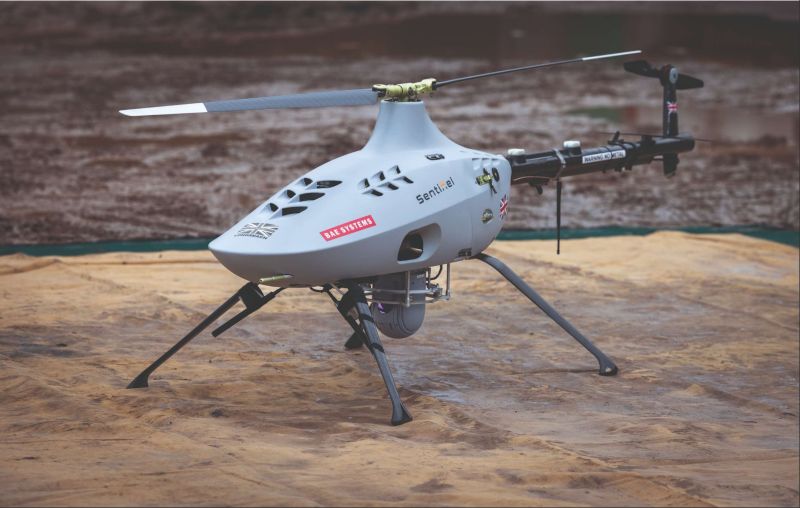Perhaps the most precise method of guiding munitions to a target is with a laser device, ‘painting’ the target so that munitions can lock on and follow the beam. However, in order to do this, military personnel need to be close enough to manually aim the laser, which can pose significant risks.
We’ve worked with a UK SME, Sentinel Unmanned, to install a laser target designation capability on its Uncrewed Air System (UAS) LONGREACH 70, enabling it to paint targets from the air and sparing personnel this dangerous role. Using an airborne laser also means you can paint targets at much greater range with less chance of being blocked by obstacles if the target is moving.
Together with Sentinel, we have already flown the LONGREACH 70 and fired the laser designator during the British Army’s Army Warfighting Experiment event, which we believe was the first time in the UK that a laser this powerful has been fired from an airborne platform under 25kg.
As Gareth Evans, the Managing Director of Sentinel, explained: “Our company was founded by ex-military personnel, so we know exactly what’s involved in laser target designation and the danger of going behind enemy lines. BAE Systems has been invaluable in helping us not only integrate the laser system, but also connect this to a wider battlefield network to act as part of an integrated force. We’re really looking forward to getting this into service and reducing some of the risks faced by today’s troops.”
As well as integrating the laser device and comms system, BAE Systems has added other features to the LONGREACH 70 to make it easy to use and highly effective, as David, the Programme Lead at BAE Systems, explained: “We’ve also installed a communications rebroadcast payload, so the LONGREACH 70 can act as a comms node to transmit information around the battlefield. This year, we’re planning to integrate a Radio Frequency (RF) sensor, to help identify enemy positions broadcasting communications. We’re aiming to have this multi-role, multi-domain system commercially available at scale by the end of 2024.”
LONGREACH 70
The LONGREACH 70 can fly for up to eight hours and, being a rotorcraft, it can also hover. This is a major advantage when laser designating, as a fixed wing craft would have to continue moving to stay in the air. The laser designator we are using has a maximum range of several kilometres, which is a very long range for designating a target. The platform itself is all but invisible and inaudible to most sensors at anything other than short range, so many targets would be unaware of its presence.
BAE Systems has been invaluable in helping us not only integrate the laser system, but also connect this to a wider battlefield network to act as part of an integrated force. We’re really looking forward to getting this into service and reducing some of the risks faced by today’s troops.Gareth Evans, Managing Director of Sentinel
Laser target designation from an Uncrewed Air Vehicle
LONGREACH 70
1 Remains airborne for up to eight hoursPaints targetBattlefield communications nodeIdentifies enemy communications broadcasting positions
Laser designator
2 Laser designator typically done by personnel from an elevated position for a perfect line of sight. High risk and exposed.
Key
Communication mode Typical laser designator (personal) Laser designator (LONGREACH 70) Identify enemy communications
Discover more from sUAS News
Subscribe to get the latest posts sent to your email.

